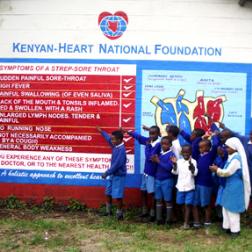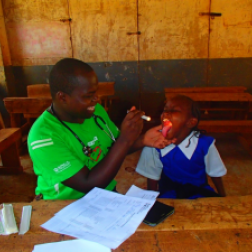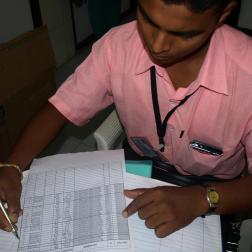Disease notification
A notifiable disease is any disease required by law to be notified to the government or other health authority. Diseases to be notified to WHO are outlined in the International Health Regulations but most countries have their own list of nationally notifiable diseases. Making a disease legally ‘notifiable’ by doctors and health professionals allows for intervention to control the spread of highly infectious diseases such as influenza, poliomyelitis or yellow fever. In less infectious conditions it improves information about the burden and distribution of disease.
In endemic settings RF – and potentially the first diagnosis of RHD – meet the criteria to be considered notifiable disease.
|
A recognisable disease |
RF can be diagnosed by the modified Jones criteria (see Annex A) though a different case definition may be used to trigger notifications. |
|
A preventable disease |
RF appears to be preventable at a population level by changing living circumstances. High quality secondary prophylaxis can be disease altering following an episode of RF, prompting calls for RF to be made a notifiable disease. |
|
There must be the potential for action |
For individuals with RF, notification can be linked to a register based program which provides secondary prophylaxis and prevents recurrences of RF. |
|
There must be an identified population or sub-population targets |
Young people at greatest risk of RF often come from low resource or vulnerable communities. |
|
Notified data should be usable |
RF notifications offer an opportunity to understand the distribution and burden of disease, plan interventions and monitor outcomes. |
Case definitions
Many infectious notifiable conditions can be identified from positive laboratory tests (direct laboratory notification). There is no blood test for RF or RHD, so cases must be diagnosed and notified by clinicians. A strict case definition and accurate clinical diagnosis are needed. Clinicians often have considerable demands on their time and may be unfamiliar with reporting requirements. Significant underreporting is common. Clear guidelines are helpful for communicating and disseminating case definitions and pathways for reporting. The New Zealand ‘Communicable Diseases Control Manual’ is a good example of this approach – the RF chapter includes: case definition, case classification, notification procedure, case management and contact management.
Closing the feedback loop
One of the barriers to clinicians reporting RF or RHD can be a perception that the data may be endlessly gathered but not used to make changes. Reporting information and action back to clinicians may be helpful to demonstrate that reports are being collated and acted upon. Routine publication of notifiable disease surveillance is standard in some parts of the world, for example via the Pacific Public Health Surveillance Network.
In countries without strong notifiable disease programs, clinicians with an interest in RF/RHD may work with other potentially notifiable diseases (for example: tuberculosis, leprosy, dengue and many others) to develop reporting systems.





